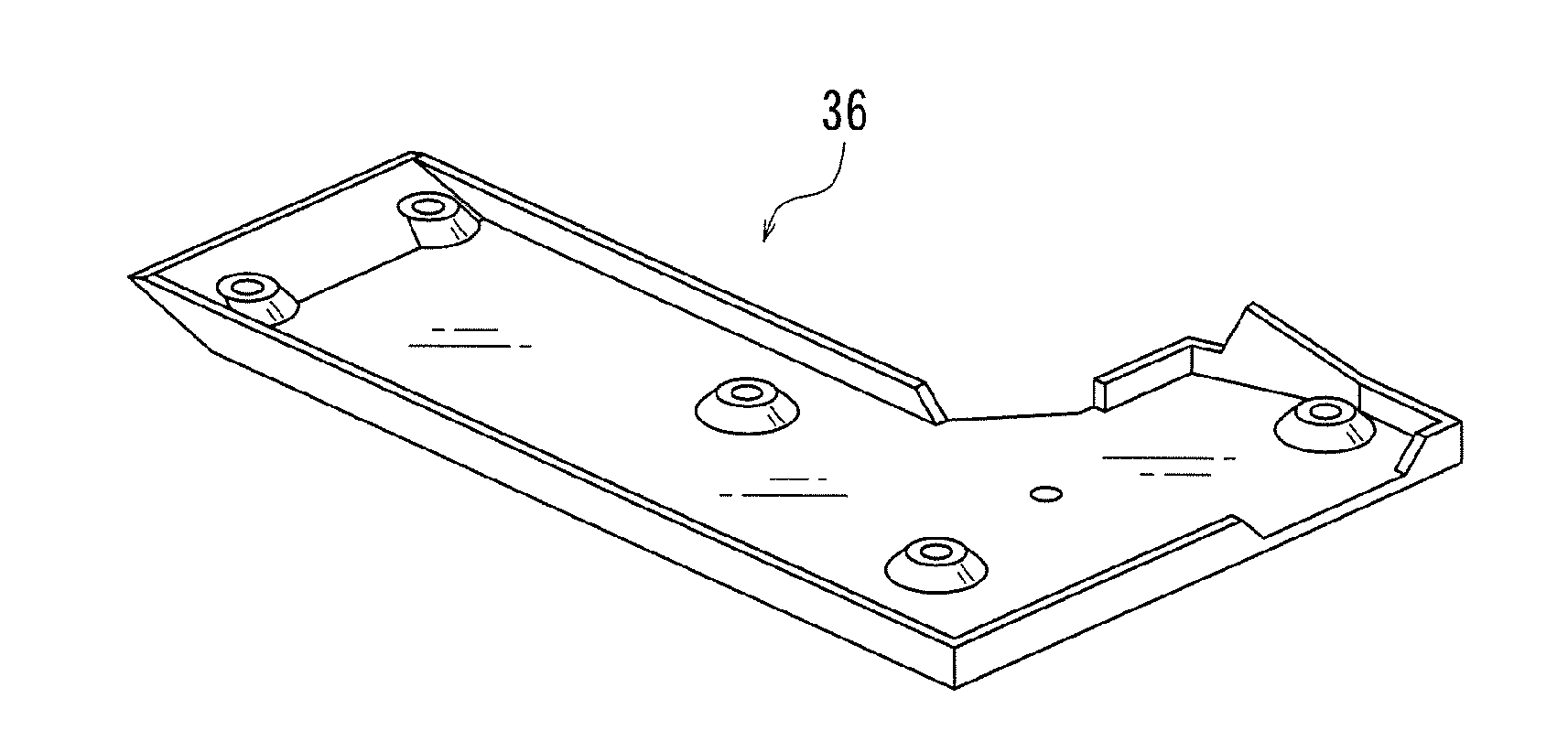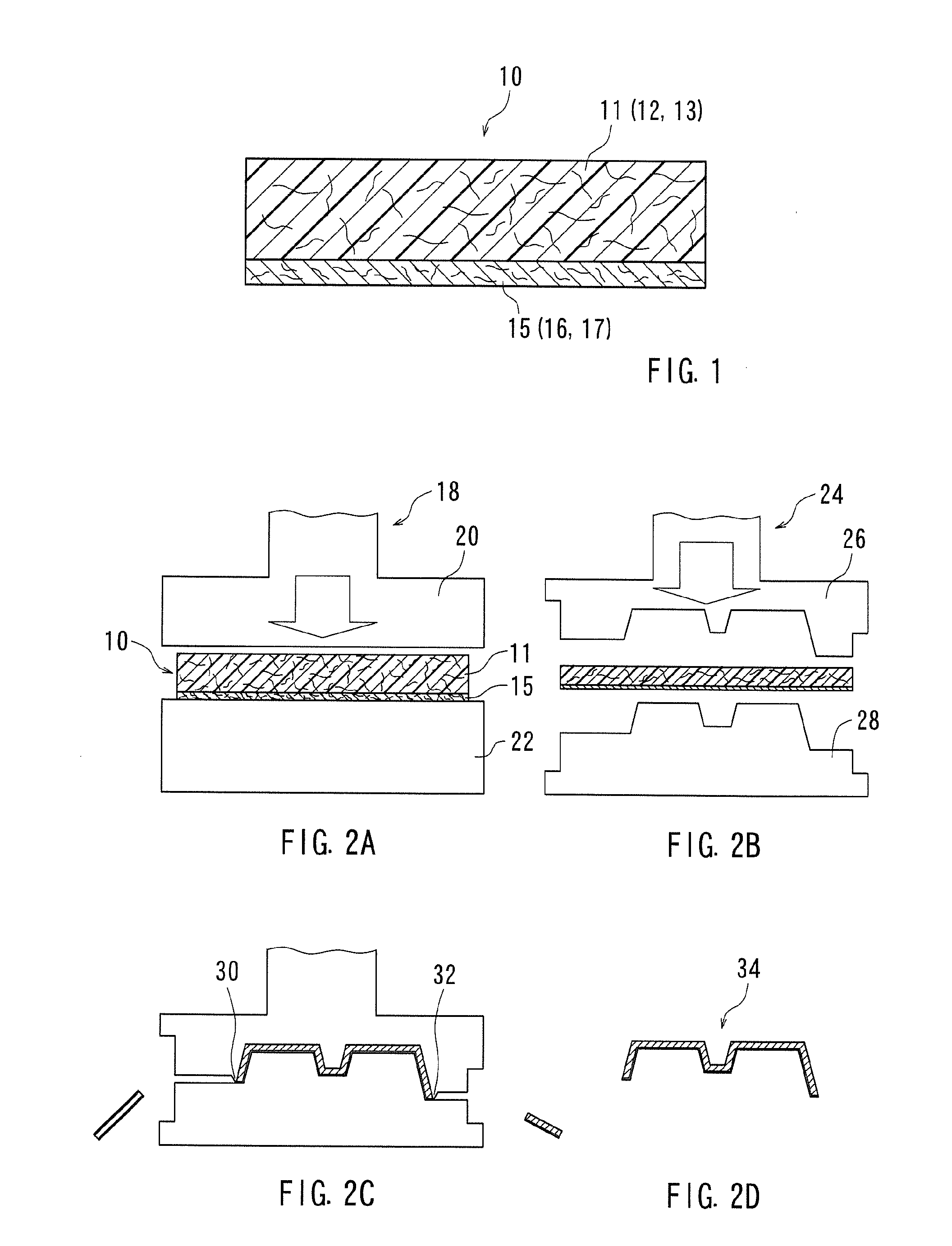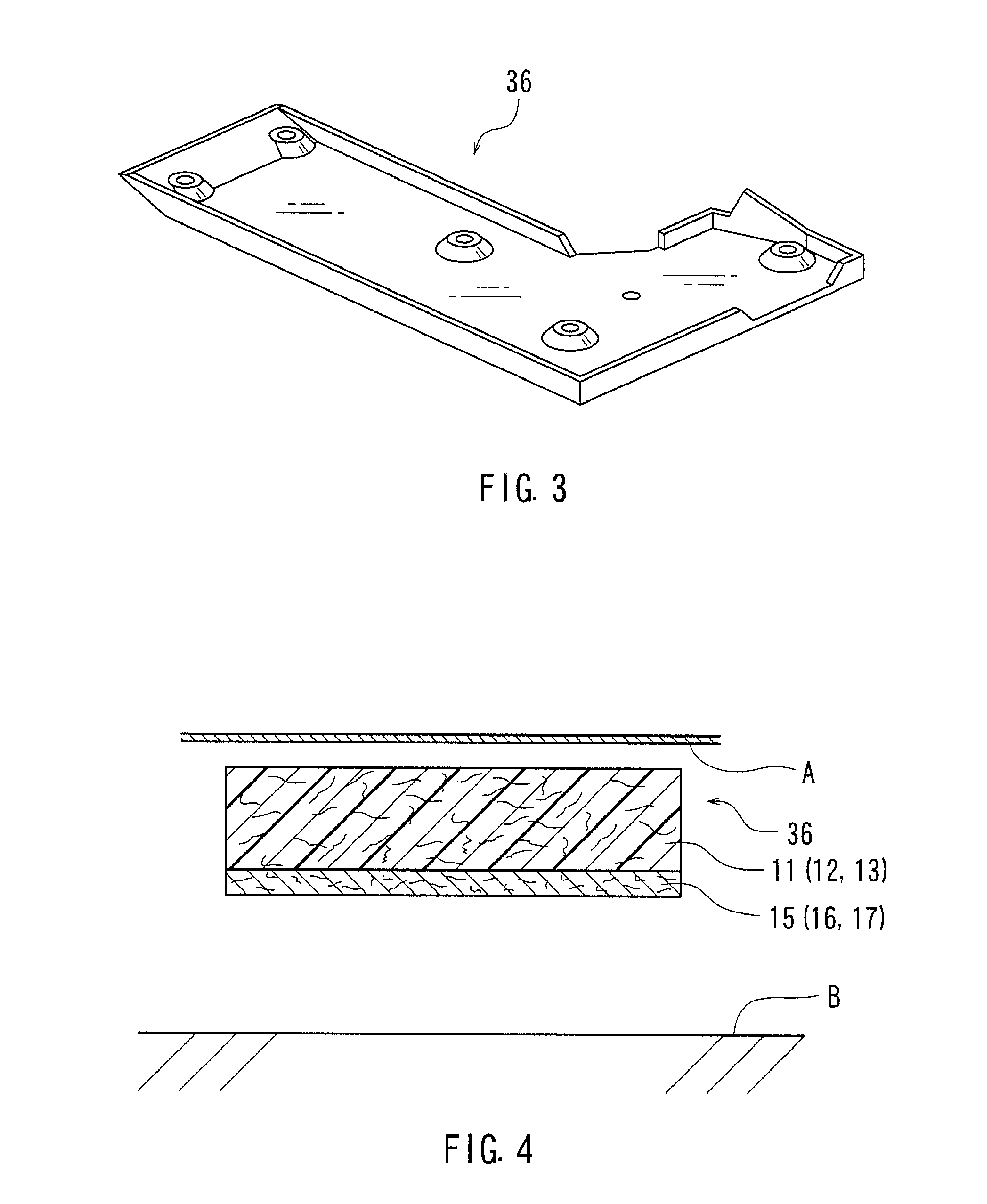Automobile body undercover
a technology for automobile bodies and undercover vehicles, applied in the field of automobile body undercover vehicles, can solve the problems of heavy weight, damage to the original functions of the automobile body undercover, and difficulty in efficiently achieving sound absorption characteristics with respect to road noise originating from the road surface side, etc., to achieve effective thermal fusion bonding suppress the separation of the base material layer, and the effect of durability against damag
- Summary
- Abstract
- Description
- Claims
- Application Information
AI Technical Summary
Benefits of technology
Problems solved by technology
Method used
Image
Examples
example 1
[0073](1) Base Material Layer 11
[0074](a) A glass fiber (average fiber length of 75 mm (3 inches), average diameter of 10 and weight of 600 g / m2) was selected as the fiber reinforcing material 12.
[0075](b) A polypropylene fiber (average fiber length of 64 mm (2.5 inches), average diameter of 6.6 dtex, and weight of 600 g / m2) was selected as the first thermoplastic synthetic resin 13.
[0076](c) The total weight was set to 1200 g / m2.
[0077](d) The glass fiber (fiber reinforcing material 12) and the polypropylene fiber (first thermoplastic synthetic resin 13) were web-formed by a mixer and were needle-punched to obtain the base material layer 11. A product made by Nihon Glass Fiber Industrial Co., Ltd. was selected as the base material layer in Example 1.
[0078](2) Nonwoven Fabric Layer 15
[0079](a) A polypropylene fiber (average fiber length of 64 mm (2.5 inches), average diameter of 6.6 dtex, and weight of 100 g / m2) was selected as the second thermoplastic synthetic fiber 16.
[0080](b) A ...
example 2
[0084](1) Base Material Layer 11
[0085]The same configuration as in Example 1 was selected as the base material layer 11.
[0086](2) Nonwoven Fabric Layer 15
[0087](a) The same polypropylene fiber as in Example 1 was selected as the second thermoplastic synthetic fiber 16.
[0088](b) A polyethylene terephthalate fiber (average fiber length of 64 mm (2.5 inches), average diameter of 11 dtex, and weight of 150 g / m2) was selected as the third thermoplastic synthetic fiber 17.
[0089](c) In the blending quantity of the polypropylene fiber (the second thermoplastic synthetic fiber 16) and the polyethylene terephthalate fiber (the third thermoplastic synthetic fiber 17), the second thermoplastic synthetic fiber 16 was 50% by weight (weight of 150 g / m2), and the third thermoplastic synthetic fiber 17 was 50% by weight (weight of 150 g / m2). That is, the total weight was set to 300 g / m2.
[0090](d) The nonwoven fabric layer 15 was manufactured in a similar way to Example 1. A product made by UNIX Co.,...
PUM
| Property | Measurement | Unit |
|---|---|---|
| length | aaaaa | aaaaa |
| diameter | aaaaa | aaaaa |
| length | aaaaa | aaaaa |
Abstract
Description
Claims
Application Information
 Login to View More
Login to View More - R&D
- Intellectual Property
- Life Sciences
- Materials
- Tech Scout
- Unparalleled Data Quality
- Higher Quality Content
- 60% Fewer Hallucinations
Browse by: Latest US Patents, China's latest patents, Technical Efficacy Thesaurus, Application Domain, Technology Topic, Popular Technical Reports.
© 2025 PatSnap. All rights reserved.Legal|Privacy policy|Modern Slavery Act Transparency Statement|Sitemap|About US| Contact US: help@patsnap.com



